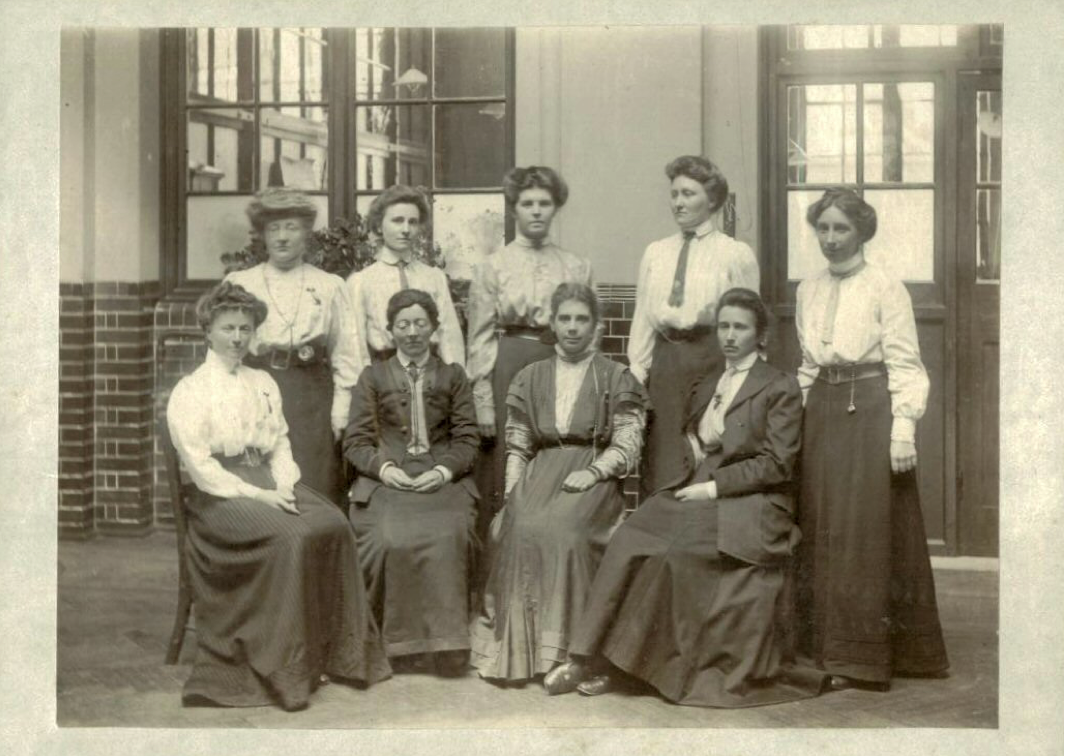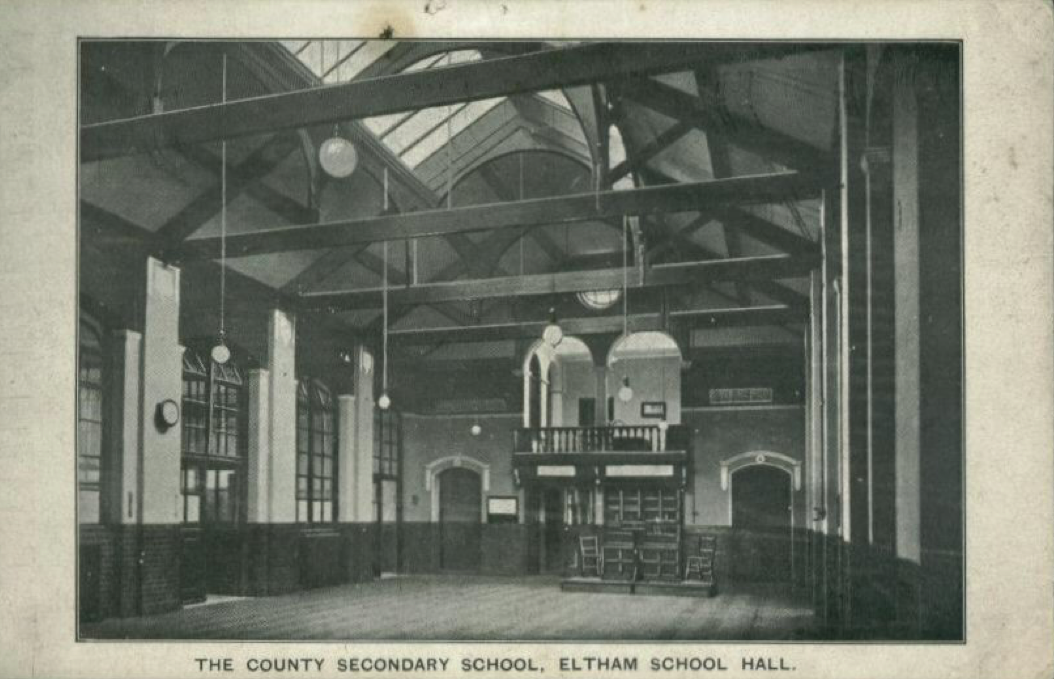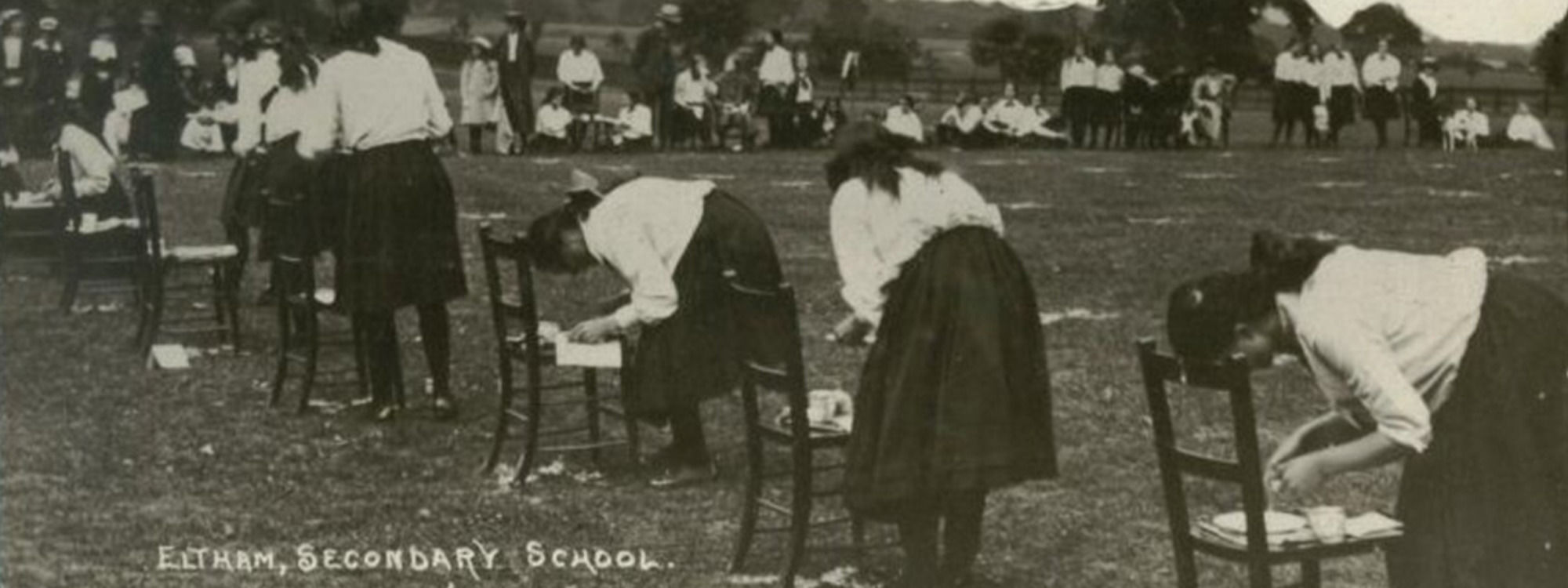1906 - 1914
It was in this society in change that Eltham Hill was opened on 18th September 1906. It was known as the County Secondary School Eltham and was housed in the building now occupied by Deansfield School. This building had been planned as an elementary school for the children of the extra workers brought into Woolwich to work at the Arsenal during the Boer War. With the ending of the war, the need disappeared and the building remained empty until the new secondary school took possession. Building alterations were made to provide laboratories and other specialist rooms.
As Eltham’s first headmistress, the L.C.C. appointed Miss Amy Bramwell B.Sc. She was to shape the character of the school for almost 25 years. Miss Bramwell, who had hesitated in her choice of career between medicine and teaching, was the first woman to take a degree in Physiology at the University of London. She taught at Cheltenham Ladies College and at the time of her appointment was a lecturer at the London Day Training College. With Miss Bramwell in that first September term were four other members of staff. Miss O’Toole taught History and Latin, Miss Lotka, Modern Languages, Miss Hughes, Science and Mathematics and Miss Millington, English. Miss Bramwell herself taught singing and there was a visiting teacher for Physical education. The first intake of pupils numbered 40.

Staff of the County Secondary School, Eltham, in 1909

The School Hall.
In those early days, the school admitted pupils from two distinct social groups. Some were the daughters of the well-to-do people of Eltham, who paid two guineas a term up to the age of 14 and seven guineas thereafter. The remainder of the pupils were from the poor families in Woolwich who received free scholarships. It was Miss Bramwell’s great success that she was able to weld these very different groups into a united school. Girls wore a uniform from the beginning; originally a short navy kilt, later changed to a navy tunic, with a white blouse and blue speckled sailor hat.
In that first term, the strong tradition of social service began with a visit in December 1906 to distribute clothing and toys to children in some of the poorest schools in London. The first Open day for parents took place at Christmas 1906 when they were shown over the building and entertained by pupils. The gift of hockey posts from Miss Bramwell enabled hockey to be played as a field game and the school won its first ever match against another school, Southwark Secondary. In May 1907 the first edition of a school magazine was published. Entitled ‘The Fledgling’ it had the school’s motto in Latin “Labora et Fac Musica” which by the second edition in 1909 had become the familiar “Labour and Make Music”. That first magazine included a story by Dorothy Lake, one of the first pupils, who later returned to spend her teaching life at Eltham Hill.
Over the next few years the school grew rapidly. In 1909 the first pupil gained entry to University and a group of girls attended a debate on the subject of Women’s Suffrage in the company of one of the mistresses. In 1919 a party visited Paris on the first school journey. By 1912 the school was full, with almost 200 pupils. The Deansfield building was overflowing, with the Sixth Form occupying the library and some classes taught in the Hall. There was a wide range of extra activities with Sports Teams, a Gardening Club, French and German Circles, Sketch Club, Choir, Flower Committee and regular dramatic entertainments. The first girls were entered for public examinations and gained distinguished results. In 1914 a pupil won the St. Dunstan’s Medical Scholarship for women to study medicine. Many girls were staying at school until the age of 18 or 19 and opportunities were offered to learn office work, filing and book-keeping in addition to Higher School Certificates. Miss Bramwell spoke at Prize-Giving of girls having “successful careers in times of tremendous competition”.
 Sports day 1912 – The Housewife’s Race.
Sports day 1912 – The Housewife’s Race.
The tradition of charity work grew and concentrated on support for the Deptford Play Centre, run by a personal friend of Miss Bramwell’s. The magazine for 1910 contains a sad account of conditions seen in a Deptford school during a visit to distribute gifts. The Centre was established for the benefit of poor and needy children and by 1914 was open 5 nights a week as well as Saturday mornings. Up to 1800 children attended every week. The County Secondary School Eltham raised funds, collected gifts and clothing and in July 1914 provided a Treat in the form of a day out at Eltham for 150 children which was expected to become an annual event.
In 1913 the building at Deansfield was enlarged, there were more than 200 pupils and the school passed with great credit its first special inspection by the Board of Education. The future seemed assured until the summer of 1914 changed everything.

